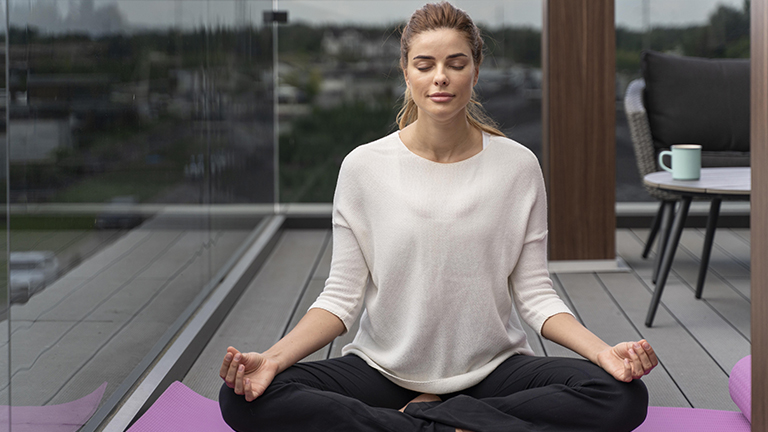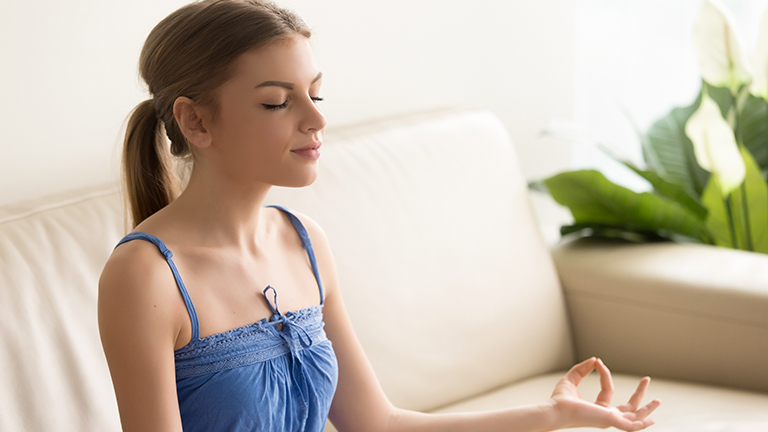In this comprehensive guide, we will explore the best breathing exercises for anxiety relief, explain their step-by-step methods, highlight the scientific evidence supporting their effectiveness, and provide practical tips to seamlessly integrate them into your daily routine. By the end of this guide, you’ll have the tools to naturally reduce anxiety, improve emotional resilience, and cultivate a calmer, more focused mind. Anxiety has become one of the most prevalent mental health challenges worldwide, affecting millions of people in the USA, UK, Canada, and beyond. From daily stressors to chronic anxiety disorders, the impact on emotional and physical well-being can be significant. One of the most effective and natural methods to manage anxiety is through breathing exercises.
The way we breathe is closely linked to our nervous system. When anxiety strikes, it often triggers shallow, rapid breathing, which in turn can intensify feelings of stress, panic, and tension. Learning to breathe correctly can help break this cycle, promoting relaxation, mental clarity, and emotional balance.
Controlled breathing exercises activate the parasympathetic nervous system, which is responsible for the body’s “rest and digest” response. This reduces heart rate, lowers stress hormone levels, and calms the mind. Whether you are dealing with short-term stress or long-term anxiety, these techniques can be practised anywhere—at home, at work, or even during stressful situations in public.
How Anxiety Affects Your Breathing
When you experience anxiety, your body triggers a fight-or-flight response. This causes:
- Rapid, shallow chest breathing
- Increased heart rate
- Muscle tension
- Dizziness or light headedness
These symptoms are often worsened by incorrect breathing patterns, creating a cycle of anxiety. Learning deep breathing for anxiety can break this cycle by slowing down your breathing, calming your mind, and reducing physiological stress responses.
Benefits of Controlled Breathing for Mental Health
Controlled breathing exercises provide numerous benefits for both mental and physical health:
- Reduces stress and anxiety naturally
- Improves focus and mental clarity
- Lowers blood pressure and heart rate
- Enhances sleep quality
- Strengthens the mind-body connection
- Supports emotional regulation
By integrating breathing techniques into daily life, you can significantly improve mental health outcomes and overall well being.
[INSERT_ELEMENTOR id=”5108″]
Top Breathing Exercises to Reduce Anxiety
Below are the most effective breathing exercises for anxiety relief, supported by research and widely recommended by mental health professionals.
1. Deep Belly (Diaphragmatic) Breathing
Description:
Diaphragmatic breathing, also called belly breathing, encourages full oxygen exchange and activates the relaxation response.
Steps:
- Sit or lie comfortably.
- Place one hand on your chest and one on your belly.
- Inhale deeply through your nose, letting your belly expand.
- Exhale slowly through your mouth, feeling your belly contract.
- Repeat for 5–10 minutes daily.
Benefits:
- Slows heart rate
- Reduces stress hormones
- Improves focus and calmness
2. 4-7-8 Breathing Technique
Description:
Developed by Dr. Andrew Weil, this method uses controlled timing to reduce anxiety and promote relaxation.
Steps:
- Inhale quietly through your nose for 4 seconds.
- Hold your breath for 7 seconds.
- Exhale completely through your mouth for 8 seconds.
- Repeat 4–6 cycles daily.
Benefits:
- Rapid stress reduction
- Helps with sleep difficulties
- Calms the nervous system
3. Box Breathing (Square Breathing)
Description:
Box breathing, popularised by Navy SEALs, is a structured technique that balances oxygen flow and promotes mental clarity.
Steps:
- Inhale through your nose for 4 seconds.
- Hold for 4 seconds.
- Exhale for 4 seconds.
- Hold again for 4 seconds.
- Repeat 4–6 cycles.
Benefits:
- Enhances focus and calmness
- Reduces symptoms of panic
- Encourages mindfulness
4. Alternate Nostril Breathing (Nadi Shodhana)
Description:
A yoga-based pranayama technique, this exercise balances the left and right hemispheres of the brain, reducing stress and anxiety.
Steps:
- Sit comfortably with a straight spine.
- Close your right nostril with your thumb.
- Inhale deeply through your left nostril.
- Close your left nostril with your ring finger and exhale through your right.
- Inhale through the right nostril, close it, and exhale through the left.
- Repeat 5–10 cycles.
Benefits:
- Reduces cortisol levels
- Promotes mental clarity
- Supports emotional balance
5. Guided Mindful Breathing
Description:
This technique involves focusing attention on your breath with guidance, often via apps, videos, or meditation instructions.
Steps:
- Sit comfortably and close your eyes.
- Focus on your inhalation and exhalation.
- Observe your thoughts without judgement.
- Follow guided prompts for 10–20 minutes.
Benefits:
- Encourages present-moment awareness
- Reduces anxiety and racing thoughts
- Enhances overall mindfulness
How to Incorporate Breathing Exercises into Your Daily Routine
Consistency is key to experiencing long-term anxiety relief from breathing exercises. Here’s how to integrate them effectively:
Morning Anxiety Relief Techniques
- Start your day with 5–10 minutes of diaphragmatic breathing.
- Combine with gentle stretching or meditation.
- Helps set a calm tone for the day.
Breathing Exercises at Work or School
- Use 4-7-8 or box breathing during stressful situations.
- Take mini “breath breaks” for 1–2 minutes.
- Helps reduce tension and mental fatigue.
Evening Relaxation Breathing
- Practice guided breathing or 4-7-8 before bedtime.
- Pair with low lights or soothing music.
- Improves sleep quality and lowers nighttime anxiety.
Scientific Evidence Supporting Breathing Exercises for Anxiety
Research supports the effectiveness of breathing exercises in managing anxiety:
- Heart Rate Variability (HRV): Controlled breathing improves HRV, a key marker of stress resilience.
- Cortisol Reduction: Studies show slow, deep breathing lowers cortisol, the stress hormone.
- Neurotransmitter Regulation: Breathing exercises can enhance serotonin and GABA levels, promoting relaxation.
Long-term practice is associated with better emotional regulation, decreased anxiety symptoms, and improved overall mental health.
Common Mistakes to Avoid During Breathing Exercises
Even the best breathing techniques can be ineffective if done incorrectly. Avoid these pitfalls:
Overbreathing and Hyperventilation
- Inhaling too deeply or rapidly can cause dizziness or lightheadedness.
- Focus on slow, controlled breaths instead.
Practising Without Proper Posture
- Slouching restricts lung expansion.
- Sit upright or lie comfortably with a straight spine.
Additional Tips for Anxiety Management
Combining Breathing with Meditation
- Pair breathing exercises with mindfulness meditation for deeper relaxation.
- Focus on inhalation, exhalation, and body sensations simultaneously.
Lifestyle Habits to Enhance Calmness
- Regular exercise
- Balanced diet with anxiety-reducing nutrients
- Limiting caffeine and alcohol
- Journaling or cognitive-behavioural techniques
Expert Opinion on Breathing Exercises for Anxiety Relief
Leading mental health professionals and researchers consistently recognise breathing exercises as a highly effective, low-risk method for managing anxiety. According to Dr. Emma Williams, a clinical psychologist specialising in anxiety disorders in the UK:
“Controlled breathing techniques are among the most accessible and immediate tools for anxiety management. They help regulate the nervous system, reduce stress hormones, and provide a sense of control over overwhelming thoughts.”
Similarly, Dr. Michael Harper, a cardiologist and researcher in the USA, emphasises the physiological benefits of deep breathing:
“Diaphragmatic and paced breathing techniques not only calm the mind but also positively affect heart rate variability and blood pressure, which are often disrupted during periods of anxiety.”
Yoga and mindfulness experts also highlight the mental and emotional benefits of pranayama and guided breathing. Anita Kapoor, a certified yoga therapist in Canada, states:
“Alternate nostril breathing and mindful inhalation-exhalation practices help balance the brain hemispheres, promote emotional stability, and enhance overall mental clarity. When practised consistently, these exercises can significantly reduce daily stress and anxiety.”
FAQs: Best Breathing Exercises for Anxiety Relief
1. What are the best breathing exercises for anxiety?
Some of the most effective techniques include diaphragmatic (deep belly) breathing, 4-7-8 breathing, box (square) breathing, alternate nostril breathing (Nadi Shodhana), and guided mindful breathing. These exercises help regulate heart rate, calm the nervous system, and reduce stress hormones.
2. How often should I practice breathing exercises for anxiety relief?
For best results, practice daily, even for 5–10 minutes. You can do shorter sessions throughout the day—during stressful moments at work, school, or before bedtime. Consistency is key for long-term benefits.
3. Can breathing exercises help with panic attacks?
Yes. Techniques like 4-7-8 breathing and box breathing are particularly effective for managing panic attacks. Controlled breathing slows your heart rate and helps regain control over racing thoughts.
4. Are breathing exercises scientifically proven to reduce anxiety?
Yes. Multiple studies show that controlled breathing improves heart rate variability, lowers cortisol levels, and enhances emotional regulation. Regular practice can lead to sustained reduction in anxiety symptoms.
5. Can I combine breathing exercises with meditation?
Absolutely. Combining breathing with mindfulness or meditation enhances relaxation, increases focus, and provides additional emotional stability. Many people find guided breathing meditations especially effective.
6. Can children and teenagers practice these breathing exercises?
Yes. Most breathing techniques are safe for all ages. For children, simpler exercises like deep belly breathing are easiest to teach and can help manage stress or school-related anxiety.
7. Do I need any special equipment for breathing exercises?
No. Breathing exercises require no equipment and can be done anywhere—at home, work, or even outdoors. A quiet space can help improve focus, but it’s not necessary.
8. How quickly do breathing exercises work?
Some techniques, such as 4-7-8 breathing or box breathing, can provide immediate relief within a few minutes. Long-term benefits, such as improved emotional resilience and lower baseline anxiety, develop with regular daily practice.
9. Are there any side effects of breathing exercises?
Most people experience no side effects. However, overbreathing too quickly or holding breath too long can cause lightheadedness. It’s important to practice slowly and gently, especially when starting out.
10. Can breathing exercises replace therapy or medication for anxiety?
Breathing exercises are a natural complementary tool and can significantly reduce anxiety, but they are not a replacement for professional therapy or prescribed medication when needed. For chronic or severe anxiety, consult a healthcare provider for an integrated approach.
Conclusion: Start Your Journey to Anxiety-Free Living
Anxiety can affect anyone, anywhere, and its impact on mental and physical health should not be underestimated. The good news is that breathing exercises offer a natural, accessible, and highly effective way to manage anxiety, reduce stress, and promote emotional balance. Techniques such as diaphragmatic breathing, 4-7-8 breathing, box breathing, alternate nostril breathing, and guided mindful breathing are simple to learn, require no equipment, and can be practiced anywhere.
By incorporating these exercises into your daily routine—morning, evening, or during stressful moments—you can experience both immediate relief and long-term mental health benefits. Scientific studies and expert opinions support their effectiveness in lowering heart rate, reducing stress hormones, enhancing focus, and fostering a sense of calm.
Remember, consistency is key. Start small, practice mindfully, and gradually increase the duration and complexity of your breathing exercises. Combined with healthy lifestyle habits such as regular exercise, balanced nutrition, and mindfulness practices, these techniques can transform your approach to anxiety and stress management.
Take the first step today. With regular practice, the best breathing exercises for anxiety relief can help you regain control, find inner calm, and cultivate a healthier, more peaceful mind—no matter where you are in the world.



